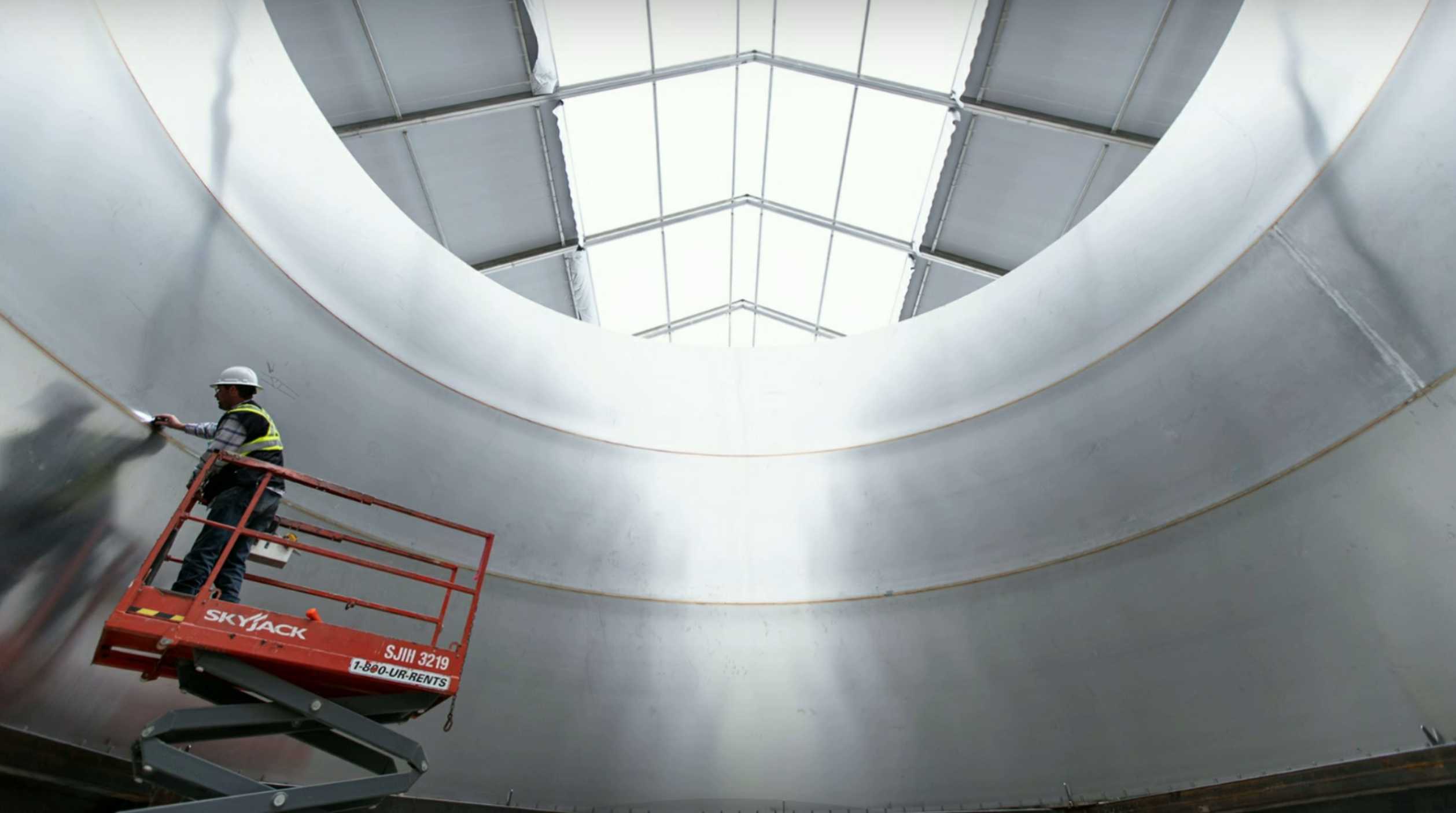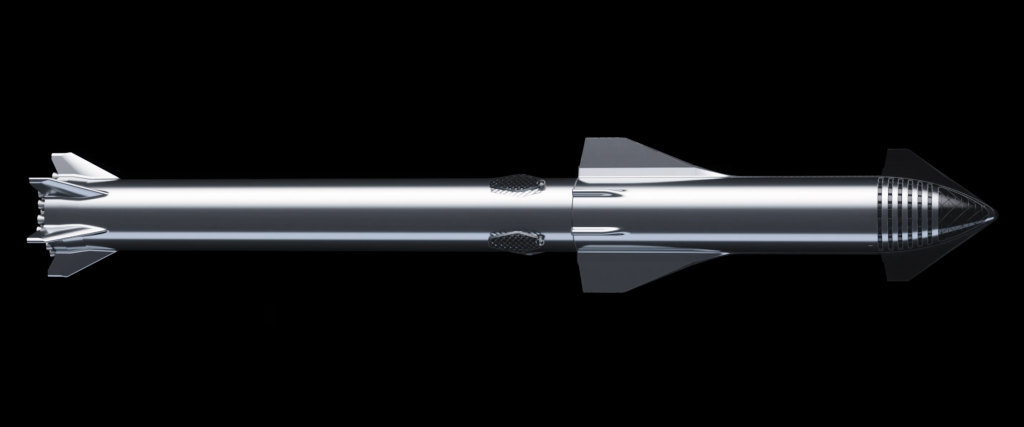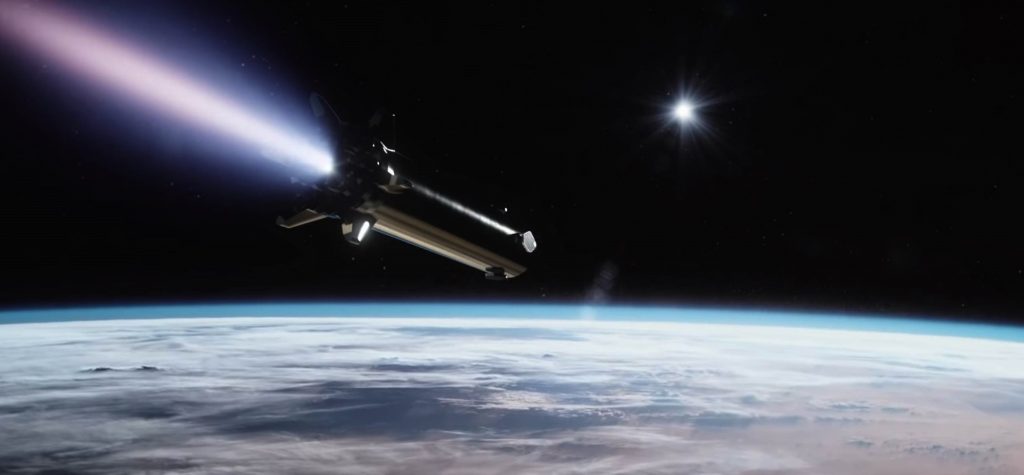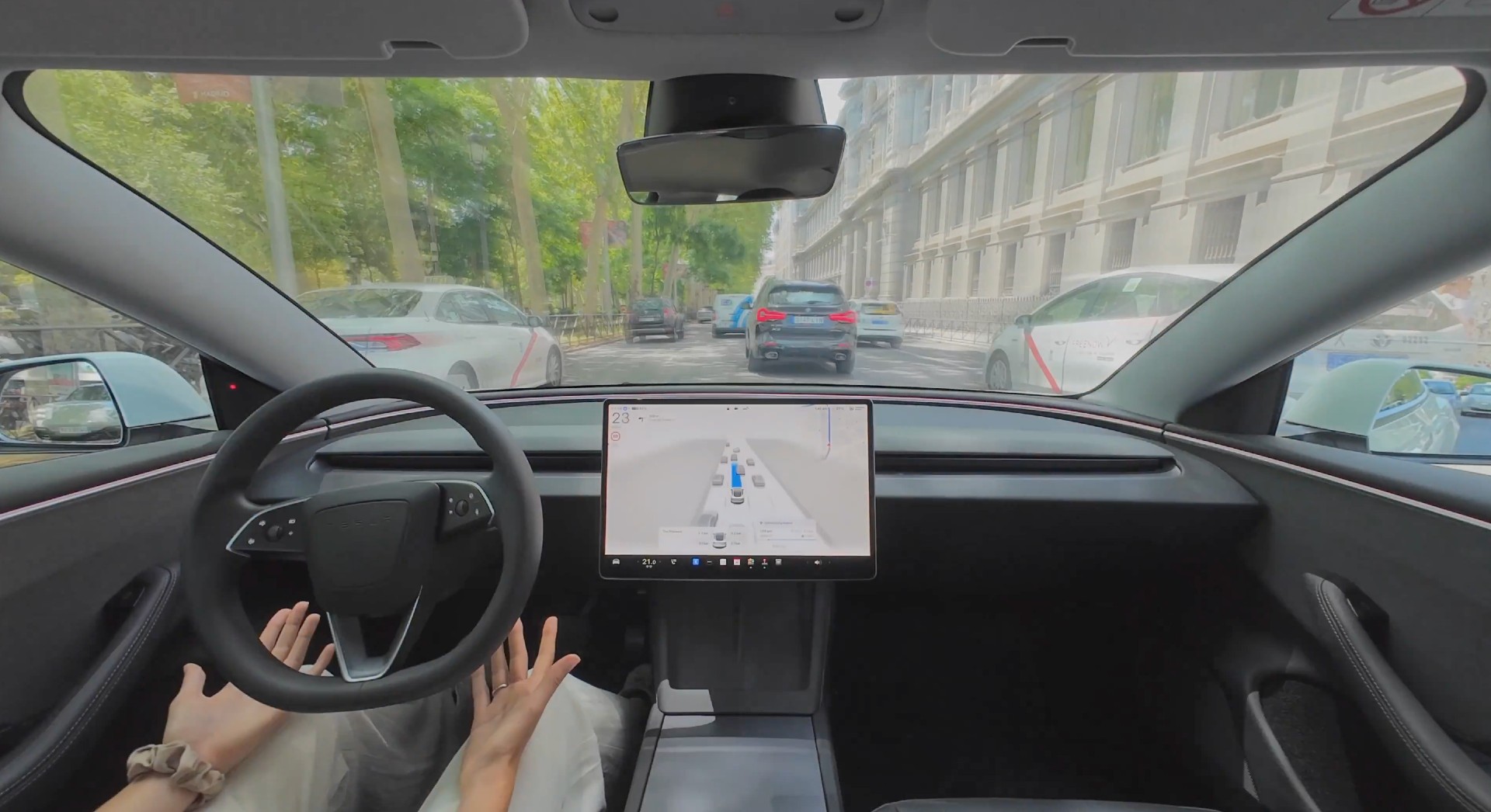

News
SpaceX tweaks Starship's Super Heavy rocket booster as design continues to evolve
CEO Elon Musk says that SpaceX continues to evolve the design of its next-generation Starship spacecraft and Super Heavy rocket booster, a process of continuous improvement the company has successfully used for a decade.
Designed to place more than 100 metric tons (220,000 lb) of payload into Low Earth Orbit (LEO), Starship would effectively double (and possibly triple) the expendable performance of SpaceX’s existing Falcon Heavy rocket. Critically, it would be able to dramatically outclass Falcon Heavy (and Falcon 9 even more so) in a fully reusable configuration, meaning that both the Starship upper stage and Super Heavy booster could be recovered and reused.
Since SpaceX first publicly revealed its next-generation launch vehicle and Mars ambitions in September 2016, the path to realizing the dream of a fully-reusable super heavy-lift launch vehicle has been decidedly windy. After making the radical decision to move entirely from carbon composites to stainless steel in late 2018, the Starship design has remained relatively similar, coalescing around a specific concept that has matured to full-scale tank tests. Now, Musk says that Super Heavy’s design was tweaked slightly to make the booster even taller than before, while he later noted that Starship’s design also continues to “[evolve] rapidly.”
According to Musk, the Super Heavy booster will be stretched by a steel ring or two, reaching a new height of ~70m (230 ft). In other words, Starship’s first stage alone will measure as tall as the entirety of a Falcon 9 or Falcon Heavy rocket – first stage, second stage, and payload fairing included. Powered by up to 37 Raptor engines, a Super Heavy booster could produce more than ~90,000 kN (19,600,000 lbf) of thrust at liftoff – an incredible 12 times as much thrust as SpaceX’s workhorse Falcon 9 rocket.
Starship, meanwhile, will be a beast of an orbital-class upper stage on its own, measuring at least 50m (165 ft) tall and weighing some 1350 metric tons (3 million lb) fully-fueled. Stacked on top of Super Heavy, a Starship ‘stack’ would reach a staggering 120m (395 ft) and weigh more than 5000 metric tons (11 million lb) once loaded with liquid oxygen and methane propellant.


In simple terms, Starship/Super Heavy should be the tallest, heaviest, and most powerful launch vehicle ever assembled once it heads to the launch pad for the first time. While SpaceX is making great daily progress its ever-growing South Texas rocket factory, built up from next to nothing in a matter of months, it could still be quite some time before that milestone is within reach.
SpaceX’s process of continuously tweaking and improving the design and production of its rockets does typically have that effect. However, it’s more a symptom of the company’s approach to hardware and software development. Instead of working slowly and carefully from nothing to a preconceived finished product, SpaceX typically seeks to design, build, and test the minimum viable product, gradually improving (or entirely replacing) past ideas, designs, and hardware until overarching goals are fully achieved.
With Falcon 9 and Falcon Heavy, this meant beginning with Falcon 1, a dead-simple proof-of-concept rocket. After successfully reaching orbit, SpaceX expanded its Falcon 9 development program, itself focused initially on the minimum viable product – a full-scale expendable rocket. Since Elon Musk founded SpaceX in 2002, the goal has always been to build a fully-reusable rocket – the company has simply chosen the far more sustainable and practical approach of tackling only a select few problems at a time.

The Starship and Falcon development programs aren’t directly comparable but it’s safe to say that Starship is currently still in the very early stages of hardware development. Shortly after revealing Super Heavy’s height growth, Musk noted that Starship’s design is also being tweaked.
Sketching out a rough series of upgrades that could feasibly be made to the reusable spacecraft’s currently design, Musk thinks that Starship’s conical tank domes (and thus Super Heavy’s, too) could be flattened. That might allow an extra ~3m (10 ft) of propellant tank space to be squeezed into the same 50m Starship length, improving performance by simply using the vehicle’s fixed volume more efficiently.
With a nascent factory quite literally churning out Starship hardware, these tweaks are a whole different animal. Thanks to data and insight gathered from testing actual full-scale Starship tanks, up to and including fully-assembled tank sections, SpaceX will be able to guide its continuous improvement with even greater precision, honing in on the next-generation rocket’s orbital launch debut.
Check out Teslarati’s Marketplace! We offer Tesla accessories, including for the Tesla Cybertruck and Tesla Model 3.
Elon Musk
Why Tesla’s Q3 could be one of its biggest quarters in history
Tesla could stand to benefit from the removal of the $7,500 EV tax credit at the end of Q3.

Tesla has gotten off to a slow start in 2025, as the first half of the year has not been one to remember from a delivery perspective.
However, Q3 could end up being one of the best the company has had in history, with the United States potentially being a major contributor to what might reverse a slow start to the year.
Earlier today, the United States’ House of Representatives officially passed President Trump’s “Big Beautiful Bill,” after it made its way through the Senate earlier this week. The bill will head to President Trump, as he looks to sign it before his July 4 deadline.
The Bill will effectively bring closure to the $7,500 EV tax credit, which will end on September 30, 2025. This means, over the next three months in the United States, those who are looking to buy an EV will have their last chance to take advantage of the credit. EVs will then be, for most people, $7,500 more expensive, in essence.
The tax credit is available to any single filer who makes under $150,000 per year, $225,000 a year to a head of household, and $300,000 to couples filing jointly.
Ending the tax credit was expected with the Trump administration, as his policies have leaned significantly toward reliance on fossil fuels, ending what he calls an “EV mandate.” He has used this phrase several times in disagreements with Tesla CEO Elon Musk.
Nevertheless, those who have been on the fence about buying a Tesla, or any EV, for that matter, will have some decisions to make in the next three months. While all companies will stand to benefit from this time crunch, Tesla could be the true winner because of its sheer volume.
If things are done correctly, meaning if Tesla can also offer incentives like 0% APR, special pricing on leasing or financing, or other advantages (like free Red, White, and Blue for a short period of time in celebration of Independence Day), it could see some real volume in sales this quarter.
You can now buy a Tesla in Red, White, and Blue for free until July 14 https://t.co/iAwhaRFOH0
— TESLARATI (@Teslarati) July 3, 2025
Tesla is just a shade under 721,000 deliveries for the year, so it’s on pace for roughly 1.4 million for 2025. This would be a decrease from the 1.8 million cars it delivered in each of the last two years. Traditionally, the second half of the year has produced Tesla’s strongest quarters. Its top three quarters in terms of deliveries are Q4 2024 with 495,570 vehicles, Q4 2023 with 484,507 vehicles, and Q3 2024 with 462,890 vehicles.
Elon Musk
Tesla Full Self-Driving testing continues European expansion: here’s where
Tesla has launched Full Self-Driving testing in a fifth European country ahead of its launch.

Tesla Full Self-Driving is being tested in several countries across Europe as the company prepares to launch its driver assistance suite on the continent.
The company is still working through the regulatory hurdles with the European Union. They are plentiful and difficult to navigate, but Tesla is still making progress as its testing of FSD continues to expand.
Today, it officially began testing in a new country, as more regions open their doors to Tesla. Many owners and potential customers in Europe are awaiting its launch.
On Thursday, Tesla officially confirmed that Full Self-Driving testing is underway in Spain, as the company shared an extensive video of a trip through the streets of Madrid:
Como pez en el agua …
FSD Supervised testing in Madrid, Spain
Pending regulatory approval pic.twitter.com/txTgoWseuA
— Tesla Europe & Middle East (@teslaeurope) July 3, 2025
The launch of Full Self-Driving testing in Spain marks the fifth country in which Tesla has started assessing the suite’s performance in the European market.
Across the past several months, Tesla has been expanding the scope of countries where Full Self-Driving is being tested. It has already made it to Italy, France, the Netherlands, and Germany previously.
Tesla has already filed applications to have Full Self-Driving (Supervised) launched across the European Union, but CEO Elon Musk has indicated that this particular step has been the delay in the official launch of the suite thus far.
In mid-June, Musk revealed the frustrations Tesla has felt during its efforts to launch its Full Self-Driving (Supervised) suite in Europe, stating that the holdup can be attributed to authorities in various countries, as well as the EU as a whole:
Tesla Full Self-Driving’s European launch frustrations revealed by Elon Musk
“Waiting for Dutch authorities and then the EU to approve. Very frustrating and hurts the safety of people in Europe, as driving with advanced Autopilot on results in four times fewer injuries! Please ask your governing authorities to accelerate making Tesla safer in Europe.”
Waiting for Dutch authorities and then the EU to approve.
Very frustrating and hurts the safety of people in Europe, as driving with advanced Autopilot on results in four times fewer injuries!
Please ask your governing authorities to accelerate making Tesla safer in Europe. https://t.co/QIYCXhhaQp
— Elon Musk (@elonmusk) June 11, 2025
Tesla said last year that it planned to launch Full Self-Driving in Europe in 2025.
Elon Musk
xAI’s Memphis data center receives air permit despite community criticism
xAI welcomed the development in a post on its official xAI Memphis account on X.

Elon Musk’s artificial intelligence startup xAI has secured an air permit from Memphis health officials for its data center project, despite critics’ opposition and pending legal action. The Shelby County Health Department approved the permit this week, allowing xAI to operate 15 mobile gas turbines at its facility.
Air permit granted
The air permit comes after months of protests from Memphis residents and environmental justice advocates, who alleged that xAI violated the Clean Air Act by operating gas turbines without prior approval, as per a report from WIRED.
The Southern Environmental Law Center (SELC) and the NAACP has claimed that xAI installed dozens of gas turbines at its new data campus without acquiring the mandatory Prevention of Significant Deterioration (PSD) permit required for large-scale emission sources.
Local officials previously stated the turbines were considered “temporary” and thus not subject to stricter permitting. xAI applied for an air permit in January 2025, and in June, Memphis Mayor Paul Young acknowledged that the company was operating 21 turbines. SELC, however, has claimed that aerial footage shows the number may be as high as 35.
Critics are not giving up
Civil rights groups have stated that they intend to move forward with legal action. “xAI’s decision to install and operate dozens of polluting gas turbines without any permits or public oversight is a clear violation of the Clean Air Act,” said Patrick Anderson, senior attorney at SELC.
“Over the last year, these turbines have pumped out pollution that threatens the health of Memphis families. This notice paves the way for a lawsuit that can hold xAI accountable for its unlawful refusal to get permits for its gas turbines,” he added.
Sharon Wilson, a certified optical gas imaging thermographer, also described the emissions cloud in Memphis as notable. “I expected to see the typical power plant type of pollution that I see. What I saw was way worse than what I expected,” she said.
-

 Elon Musk3 days ago
Elon Musk3 days agoTesla investors will be shocked by Jim Cramer’s latest assessment
-

 News1 week ago
News1 week agoTesla Robotaxi’s biggest challenge seems to be this one thing
-

 News2 weeks ago
News2 weeks agoTexas lawmakers urge Tesla to delay Austin robotaxi launch to September
-

 Elon Musk2 weeks ago
Elon Musk2 weeks agoFirst Look at Tesla’s Robotaxi App: features, design, and more
-

 Elon Musk2 weeks ago
Elon Musk2 weeks agoxAI’s Grok 3 partners with Oracle Cloud for corporate AI innovation
-

 News2 weeks ago
News2 weeks agoSpaceX and Elon Musk share insights on Starship Ship 36’s RUD
-

 News2 weeks ago
News2 weeks agoWatch Tesla’s first driverless public Robotaxi rides in Texas
-

 News2 weeks ago
News2 weeks agoTesla has started rolling out initial round of Robotaxi invites














